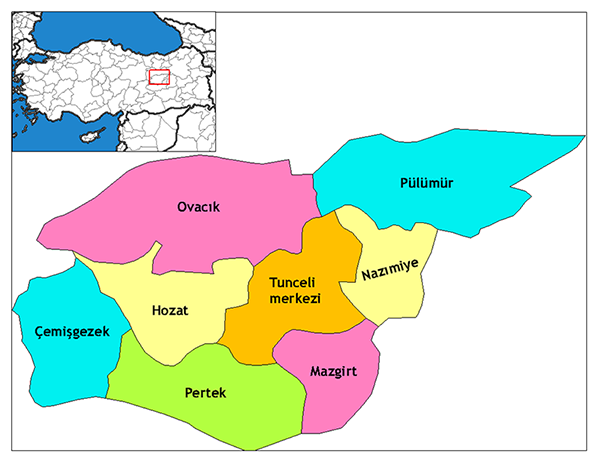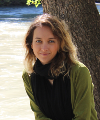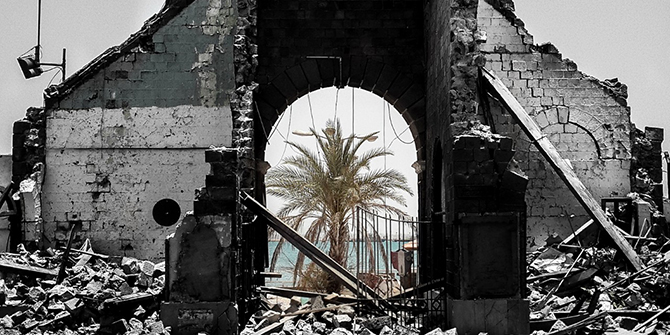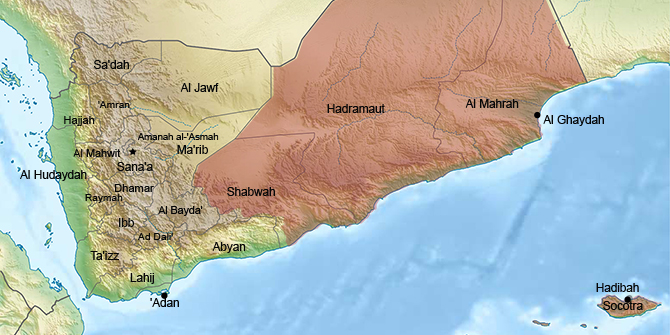by Pinar Dinc
Historically, Dersim was a region within the Ottoman borders, surrounded by Pontus-Rum and Lazistan to the north, Kurdistan to the south, Armenia to the east, and Turkey to the west. The region was in the eastern part of the modern Turkish state, and it included parts of the surrounding cities where predominantly Alevis lived (see Map 1).

Nonetheless, when one talks about Dersim today, we mainly mean the city of Tunceli, surrounded by Erzincan to the north and west, Elazığ to the south, and Bingöl to the east (see Map 2). Throughout this research, Dersim will be used interchangeably to refer to either the larger geographical area or the modern city of Tunceli.

Authentically, Dersim is a Turkish, Kurdish, and Dersimce speaking region with a significant Alevi population (see Map 3). Due to this heterogeneous character and autonomous space, Dersim had been regarded as a zone of conflict by central authorities, may it be the Ottoman Empire or the modern Turkish Republic. Also, Dersim was considered a ‘magnet’ for the Alevis (beginning from the 16th century) as well as the Armenians (especially in the 19th century), who had problematic relationships with central authorities. From those early years until 1935, Dersim survived, more or less, as a partly autonomous, closed region.

With the introduction of the Law of Tunceli in 1935, parts of the larger Dersim region were separated and joined to neighbouring cities. The remainder of the larger Dersim area was reorganised as a new city, now called Tunceli. With this, Dersim lost its reputation as a safe and distant space for the ‘others’ and its centuries long ‘autonomy’. Throughout 1936, the central Turkish state made efforts to build roads, bridges, schools, post stations, military barracks and police stations under the banners of ‘modernisation’ and ‘civilisation’. With military operations in 1937 and ethnic cleansing in 1938, Dersim lost almost one third of its population, while another third was subject to forced deportation (The state archives are still closed, so the official number of deaths and deportation during and in the aftermath of Dersim 1837–38 are still uncertain). Dersim remained as a ‘forbidden zone’ until the 1947 amnesty.
Arguably, Dersim’s geography played a key role for such a long period of autonomy. It is a mountainous region with numerous bodies of water, valleys, and grottos. This had several consequences; first, Dersim was a distant land where heterodox groups could live in relative autonomy. Second, it meant that Dersim was not an agriculture-friendly area and could not have a self-contained economy. Third, and related to the previous reason, Dersim’s had a ‘plunder-economy’ and Dersimis were known as ‘bandits’, which later became a prejudice against Dersimis for the modernising Turkish state. Fourth, despite several attacks to ‘solve’ the Dersim ‘problem’, due to its geography, Dersim remained unconquered by military forces that were not familiar with the region. Finally, Dersim’s geography allowed many Dersimis to escape and hide in the grottos during the 1938 ethnic cleansing and later from the 1970s onwards for guerilla activities of the leftist and Kurdish organisations.
Today, Dersim is the leading city in Turkey in education-related rankings, including literacy and education levels as well as in statistics regarding social life (see Table 1). However, when it comes to life satisfaction, Dersim comes last. Due to this, despite being known as ‘a city of enlightened people facing towards the West’, Dersim is a city with the highest rates of emigration not only to other parts of Turkey but also to many cities in Europe. For a very long time, Dersim has been one of the two cities with the biggest emigration ratios, and more recent data shows that it is the least populated city in Turkey. Dersim’s overall population sits at around 86,000 with a density of 11/km2.
| Subject | Tunceli/Dersim Rank | Istanbul Rank |
|---|---|---|
| Least Adolescence Birth Rate (2014) | 1 | 5 |
| Gender Equality Index (2014) | 2 | 1 |
| Education Index (2016) | 1 | 56 |
| Life Satisfaction (2016) | 81 | 50 |
Table 1: Selection of indexes and Tunceli’s ranks in comparison with 80 other cities
Dersim usually becomes more crowded during summers, when thousands of Dersimis from other regions of Turkey as well as Europe return for holidays. The diaspora community is also known to support the local economy. According to estimations given by the FDG, there are approximately 200,000 Dersimis living in various parts of Europe, especially in Germany. Meanwhile, around 250,000 Dersimis are believed to be living in different parts of Turkey, with 85,159 of them in Istanbul alone as reported by the 2013 population statistics. As could be shown, the number of Dersimis living elsewhere significantly exceeds Dersim’s population.
Nevertheless, Dersim still cannot be pointed out as a peaceful province. In the 1970s, Dersimis largely supported Marxist movements, and not only ideologically. Dersim has been a key area for guerilla activity. Due to various religious, ethnic, and political conflicts with central authorities, especially with the arrival of the PKK to the region in the 1990s, Dersim had become a war zone. As the peace process with the Kurds halted in the summer of 2015, Dersim is once again a region where military forces want to keep control and guerillas of various groups fight back. Consequently, Dersim’s social life and demography is severely affected. Dersim’s trauma and political turmoil is as lively as ever and it does not seem likely to come to an end in the near future.
 Pinar Dinc is a PhD candidate at the Department of Government, LSE, under Dr Bill Kissane’s supervision. Her research focuses on the competition over collective memory and identity in contentious politics, by looking at the case of Dersim. This research aims to explain the causes and outcomes of this competition by outlining the mechanisms of the interplay of macro, meso, and micro dynamics.
Pinar Dinc is a PhD candidate at the Department of Government, LSE, under Dr Bill Kissane’s supervision. Her research focuses on the competition over collective memory and identity in contentious politics, by looking at the case of Dersim. This research aims to explain the causes and outcomes of this competition by outlining the mechanisms of the interplay of macro, meso, and micro dynamics.
The title of this piece comes from a news article published in Tan Newspaper on 15 June 1937. This article simply claims that Dersim, as a backward region, is aimed to be modernised by the state, and that it would become a skiing centre in Turkey.







I am shocked this person was a PhD candidate and at LSE. There are so many inaccuracies that it makes one wonder if this person has an agenda or has received very poor training.
Just as an example. To claim mass migration is due to life dissatisfaction in Dersim without any contextualising is not right. The mass migrations out of Dersim were a result of the brutal and sustained crackdown of left wing dissidents in Turkey by the Government.. Many people escaped to Europe as political migrants. To claim people left because they were unhappy in an of itself it a fragrant rewriting of history.
First it‘s a more and less good article.
Few remarks from a Dersimli.
1. „Dersim“ is/was in Othoman language the official name of the Region.
2. in Zaza language (the main spoken laguage in Dersim/Kalan) we call our homeland „Kalan“. Kalan mean the rest snow on spring who keep remain after a long winter.
3. the other common used language in Kalan besides Zazaki are Armenian (before genocide), Kurdish and Turkish.
Many Alevi people from Dersim/Kalan who had close connection with Armenians who lived in Dersim/Kalan helped the Armenians from Dersim/Kalan tho survive.
4. beside Alevi (Zaza and Kurds) we have also Dersimli/Kalan people with Sunni belive (Cemisgezik) and Christian religion (before genocide of Armenians).
5. many Alevi Zazas tribes are emigrated with Sultan Harzemshah from Horosan to Dersim/Kalan to escape the mongolian storm.
Because Dersim/Kalan was the only region after Ardabil who had a large community of follower of Shah Ismael. Therefore the Zazas from Dersim/Kalan are called also Kizilbash (red hats).
Finaly Dersim/Kalan people love Freedom and are very Liberal and also are very well educated and open minded therefore is the comparison with Switzerland legimated.
It seems that the researcher does not know Dersim properly. Dersim people talk both Kurmanci and Kirmancki (Zaza). There is no language called Dersimce. Why do you write bandits? Pir Sey Riza had control over the whole of Dersim and you can not write like that. You have very wrong information, for example PKK came to Dersim before 1990 and you can not compare Dersim with Switzerland because I am from Dersim and live in Switzerland. It’s a completely utopian title to write Turkey’s Switzerland. You know that Switzerland is one of the richest countries in the world. Can you say the same for Dersim? have you been to Switzerland? do you really know Switzerland? if I were your supervisor then would not approve of your article. I should also make a realistic academic critique.
Many researcher discuss about Dersim language. Dersimce is like another lang. against to Kurdish but it is definetly not. It is kurdish, You can solve this complication about lang with taking acedemic kurdish lessons. Sorry for my beginner english.